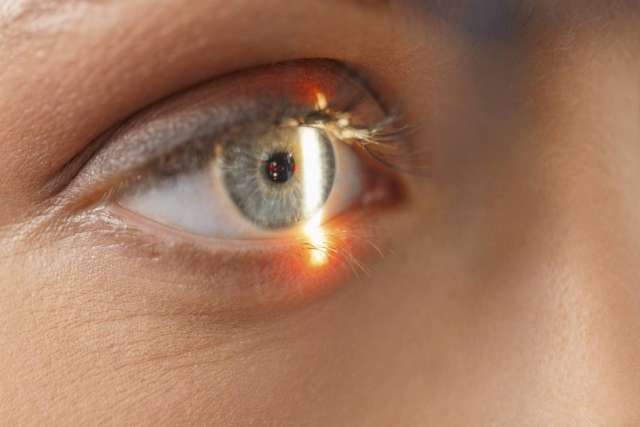As parents prepare their children to return to in-person learning, they may notice a downside to the computer technology that has enabled kids to continue their education remotely during the COVID-19 pandemic.
There has been an increase in nearsightedness, or myopia — which makes it difficult to see distant objects — being diagnosed among children across the country. It’s just one vision concern that parents and teachers will need to be on alert for as the new school year begins.
“We’re definitely seeing a good number of kids who either have a new onset of myopia or are experiencing a worsening of the myopia that they already have,” said Monica R. Khitri, MD, a UCLA Health ophthalmologist. “But hopefully that tide will change soon as kids get back to the classroom and reduce their screen time. However, right now we are seeing this trend of increased myopia as kids are getting all prepared for going back to school and getting their new eyeglasses ready.”

In addition to myopia, doctors are noticing more cases of dry eyes, blocked tear glands and eye strain among young people who have spent more than a year glued to their smartphones and computer screens.
Signs of trouble

Dr. Khitri recommends that parents and teachers watch for signs of vision problems as children return to the classroom. These can range from eyes crossing or drifting, excessive blinking or a child needing to walk to the front of the room to see the chalkboard.
If a child shows any indication of a vision problem, she recommends a visit to an optometrist or ophthalmologist (an eye MD) as soon as possible.
“For the last 15 or 16 months or so, kids haven't really had much of a need for distance vision, since all their work has been up close,” Dr. Khitri said. “So as they start going back to school and they start looking at the board and having to use their distance vision again, they may start noticing problems that they didn't notice before.
“If they need to come to the front of the class to be able to see, that's a sign that they might be struggling with their vision a bit,” she said.
Take a break from the screen
Dr. Khitri recommends that parents urge their children to take regular breaks while working on their computers at home.
“If a child is going to continue with distance learning, or any child who's still going to have a good amount of digital screen use, it would still be very important to follow the 20‑20‑20 rule, to make sure they're taking breaks frequently when they're on the screen to break up that kind of persistent near work,” Dr. Khitri said.
The 20-20-20 rule encourages anyone using a smartphone or computer screen to stop every 20 minutes and take a 20-second break that includes looking at something 20 feet away as a pause from staring at a close-up screen.
“There's still going to be some computer and digital screen use even when children go back to school, but hopefully it will be a lot less than there has been over the last year and a half,” Dr. Khitri said.
Dr. Khitri is hopeful that vision issues, in general, will decrease naturally as children become more active and use their long-range vision more. Just the fact that they’re getting out of the house should help.
“The main thing is, if there's any concern, the parents should not hesitate to make an appointment for an eye exam,” Dr. Khitri said. “It's better to catch these things earlier, so that way the kids can do as well as they can in school.”
Eye damage an offshoot of the pandemic?
Mitra Nejad, MD, an ophthalmologist with the UCLA Stein Eye Institute, suggests eye damage may be a side effect of the pandemic. She explains why:

- Prolonged screen use requires us to keep our eye muscles directed up-close, and they can decompensate after extensive near work, sometimes even causing double vision. The lens of the eye also has to maintain its focus on the screen, and after an extended period of time there may be a delay in its ability to relax and refocus.
- Staring at screens reduces our blink rate. The normal blink rate is 22 blinks per minute – this drops to seven blinks per minute with the use of digital devices. Blinking is perhaps the most important mechanism against dry eye.
- In recent studies, the prevalence of dry eye disease is about 50% for adult computer users, and smartphone use is directly correlated with dry eye in children.
- Dry eye can cause a spectrum of symptoms, from soreness to foreign body sensation (“eyelash in my eye”) to burning or watery eyes. Taking breaks in screen time, staying hydrated and placing a humidifier in your work space may help prevent dry eye symptoms. Preservative-free artificial tears also are a great first line of treatment.
Find an eye care provider at the UCLA Stein Eye Institute/Doheny Eye Centers.
Tina Daunt is the author of this article.





